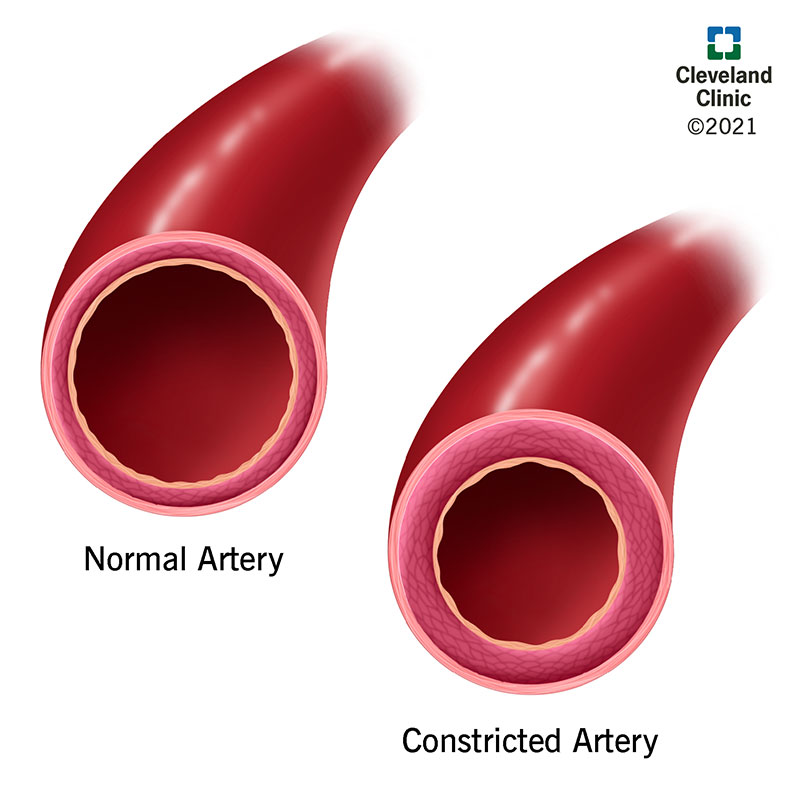What kind of changes happen to vessels when the pH of blood reduces?
Minimal effect on vessels
No effect on vessels
Vasodilation
Vasoconstriction
The Correct Answer is D
Choice A: Minimal Effect on Vessels
A reduction in blood pH, which indicates acidosis, does not have a minimal effect on blood vessels. Acidosis can significantly impact vascular tone and function. Therefore, this choice is incorrect as it underestimates the physiological changes that occur in response to a decrease in pH.
Choice B: No Effect on Vessels
Similarly, stating that a reduction in blood pH has no effect on vessels is inaccurate. Blood pH is tightly regulated, and deviations from the normal range (7.35-7.45) can lead to significant physiological responses. Acidosis can alter vascular tone, making this choice incorrect.
Choice C: Vasodilation
While vasodilation can occur in response to certain conditions, a reduction in blood pH typically leads to vasoconstriction rather than vasodilation. Vasodilation is more commonly associated with an increase in blood pH (alkalosis) or other factors such as increased levels of nitric oxide or prostaglandins.
Choice D: Vasoconstriction
When the pH of blood reduces, indicating acidosis, it often leads to vasoconstriction. This response is mediated by chemoreceptors that detect changes in pH and stimulate the vasomotor center to increase vascular tone. Vasoconstriction helps to maintain blood pressure and ensure adequate perfusion of vital organs during acidosis. Therefore, this is the correct answer.

Nursing Test Bank
Naxlex Comprehensive Predictor Exams
Related Questions
Correct Answer is C
Explanation
Choice A Reason:
Boxed warnings, also known as black box warnings, are the strictest warnings put in the labeling of prescription drugs by the FDA when there is reasonable evidence of an association of a serious hazard with the drug. However, they do not necessarily indicate that a drug should only be given in life-threatening circumstances. Instead, they highlight the potential for serious or life-threatening risks and advise on how to use the drug safely.
Choice B Reason:
While some boxed warnings may include information about teratogenic effects (effects that can cause birth defects), this is not their primary purpose. Boxed warnings are broader and can apply to various serious risks, not just teratogenicity. Therefore, this choice is too narrow to be correct.
Choice C Reason:
This is the correct answer. Boxed warnings are designed to alert prescribers to serious or life-threatening risks associated with a drug and provide guidance on how to mitigate these risks. This can include recommendations for monitoring, dosage adjustments, or avoiding certain populations. The goal is to ensure that prescribers are fully aware of the risks and can take appropriate measures to minimize harm to patients.
Choice D Reason:
Boxed warnings do not typically provide information about antidotes for toxicity. While managing toxicity is an important aspect of drug safety, boxed warnings focus on alerting prescribers to serious risks and how to mitigate them, rather than detailing specific antidotes.
Correct Answer is C
Explanation
Choice A Reason:
Hyperplasia refers to an increase in the number of cells in an organ or tissue, usually resulting in an increase in the size of the organ or tissue. This process is often a response to a stimulus and can be physiological or pathological. However, hyperplasia does not involve the replacement of one cell type with another, as seen in this case.
Choice B Reason:
Dysplasia is characterized by abnormal growth and development of cells within tissues or organs. It often indicates a precancerous condition and involves changes in cell size, shape, and organization. While dysplasia can occur in the respiratory tract, it does not describe the replacement of one type of epithelial cell with another.
Choice C Reason:
This is the correct answer. Metaplasia is the process by which one type of adult cell is replaced by another type of adult cell that is not typical for that tissue. In this case, the normal columnar ciliated cells in the bronchial airway have been replaced by stratified squamous epithelial cells, a common adaptation in response to chronic irritation from smoking.
Choice D Reason:
Hypertrophy refers to an increase in the size of cells, leading to an increase in the size of the affected organ or tissue. This process does not involve a change in cell type, making it an incorrect choice for this scenario.
Whether you are a student looking to ace your exams or a practicing nurse seeking to enhance your expertise , our nursing education contents will empower you with the confidence and competence to make a difference in the lives of patients and become a respected leader in the healthcare field.
Visit Naxlex, invest in your future and unlock endless possibilities with our unparalleled nursing education contents today
Report Wrong Answer on the Current Question
Do you disagree with the answer? If yes, what is your expected answer? Explain.
Kindly be descriptive with the issue you are facing.
